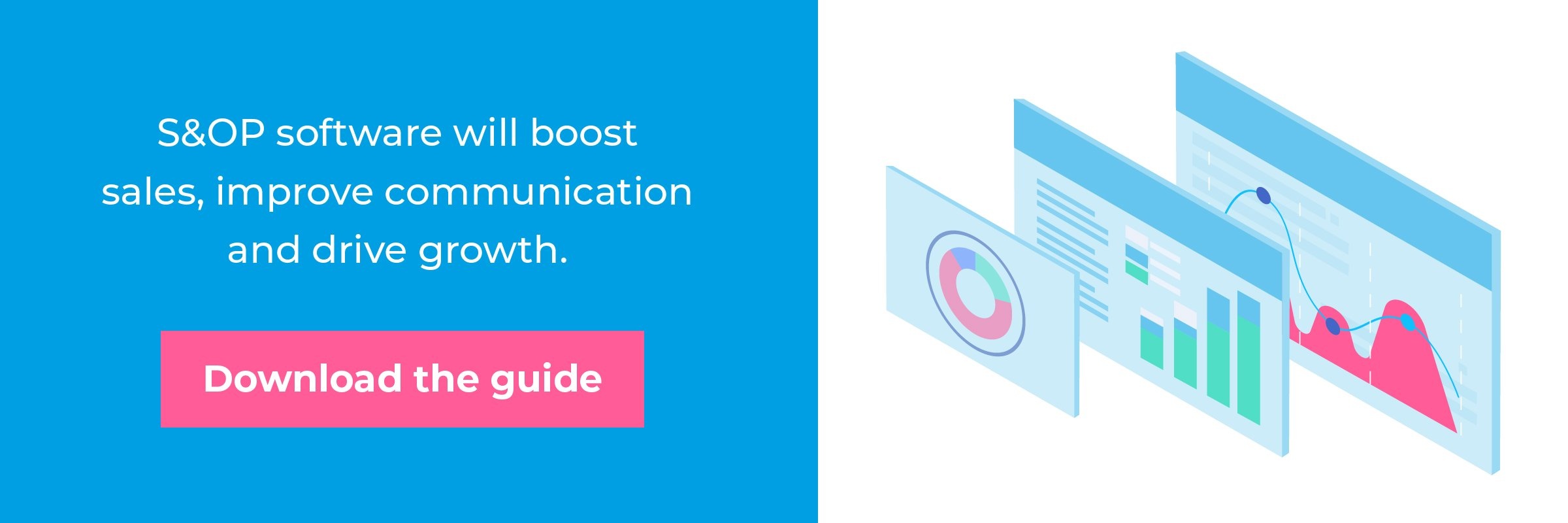For any efficient business, it’s worth getting to grips with the importance of scenario planning to further your overall sales and operational planning (S&OP) strategy. Planning for future issues is crucial. Imagine what could happen if identified risks in the market turn into issues, such as a country’s political situation negatively affecting your supply chain.
Scenario planning can help evaluate the impact of key variables such as pricing, production volumes or sales incentives, for example, to monitor and adjust these processes in response to market volatility..What is Scenario Planning AND HOW DOES IT HELP?
Scenario planning is a method of testing the impact of various strategic options being considered. It helps you look at a situation and discover any leverage you can use to turn uncertain situations into favourable ones.
In order to stay ahead of the curve, your business needs an effective scenario planning process that is proactive. Think of scenario planning as event management, where you’re able to keep situations under control and are ready to adapt to possible eventualities.
Periods of volatility are testing times for any company. In a competitive market, only companies that remain in control of circumstances and act with certainty are likely to succeed.
Any strategic plan needs to be tested to determine its effectiveness. Without adequate testing, you can be left in deep water if markets change quickly and your strategy isn’t up to the task of dealing with the problem.
By employing scenario planning, the robustness of your current plans can be gauged against the possibility and effects of several scenarios.
This crucial process is an accurate way of creating a best and worst-case scenario, while planning for both outcomes. In any situation, there's the state in which you’d like to end up and the state which you’d like to stay as far as possible from. Part of the importance of scenario planning comes from identifying these two states and creating conditions that will help you reach one while avoiding the other.
Why Is Scenario Planning Topical?
Legacy planning systems can be a struggle. CFOs need to respond to rapid market changes, but are held back by data loads coming from multiple source spreadsheets and systems. A result of this is that any serious or complex scenario evaluation could take weeks as each remote spreadsheet is updated.
Through the use of a dedicated scenario planning software, the Sales, Operations and Departmental plans can be linked in real-time and new versions of these can be altered when needed. Scenario planning is topical because of the value of enabling variable change - making near real-time alterations and producing collaboration to resolve these issues.
WHAT CAN BE ACHIEVED WITH REAL-TIME Scenario Planning?
Scenario planning is an important subset of an overall S&OP strategy. ‘Real-time’ is where a scenario can be run in hours rather than days or even weeks. To act before a situation changes, you need the correct answers - real-time scenario planning gives us this help.
It’s usually the case that when a question is asked, it takes a very long time for data extraction and modelling to run a scenario (because of the variety of business systems utilised). Because of this, you may find the answer but as so much time has elapsed, you forgot why you asked the question or the situation that gave rise to the initial scenario has completely changed.
So why scenario planning in real-time? The following are the benefits that scenario planning can ensure your business experiences.
Creating agility within your business
Scenario planning helps to make your business agile and able to adapt to multiple eventualities. It reveals the outcomes of key business variables. Both internal and external changes such as supply chain issues, company restructuring or raw material cost increases can be responded to in a rapid and accurate manner.
While some of your plans don’t need possible scenarios created in order to determine effectiveness, others are dependent on scenarios. Some may even pose a severe risk if you’re investing in something unpredictable.
Imagine if you’ve launched a product that has to be recalled. Scenario planning can help you create a best-case scenario and work towards that outcome.
To succeed in the present day, a business strategy has to be agile. Pitfalls can be avoided through agility and adequate preparation.
Assessing efficiency options
Scenario planning is critical when it comes to understanding the true impact of market changes.
Assessing how to achieve cost reduction or whether or not to outsource an internal service can be evaluated to determine the best approach and likelihood of success. This means that any course of action that you take will achieve the expected outcome.
Developing business growth
Effective forecasting of different scenarios helps you to build a broader and more accurate picture of your business’ future. Because of this, opportunities for growth and expansion will be revealed, as well as anticipating any bumps in the road.
Scenario planning helps to identify the risks that come with growth. For example, new territories pose risk of competition, whilst new offices or employees create a temporary financial strain. Is this sustainable if you have a bad quarter? Using this process helps to determine how much working capital you can utilise so that the growth of your business is sustainable.
Monitoring the profitability of products, customers and channels
A key feature of scenario planning is the ability to view the profitability of products at all stages of their life cycle. Because of this, you’re able to test the effects of manipulating the product mix. With access to profitability information, product, customer and channel combinations provide critical decision support.
A product may appear profitable, but when delivered to a particular customer segment via a particular distribution channel, the picture can be different.
When considering decisions like discontinuing a product or a distribution channel, scenario planning can help. Taking out what was a key metric in your process can have a direct impact on the profitability of other products and channels. Only efficient scenario planning can solve and forecast for eventualities such as these.
Increasing investor trust
The importance of scenario planning affects the trust you’ll see from your stakeholders.
As you’ll be able to forecast scenarios, you’ll gain insight on them. You can present this insight to your investors and stakeholders, showing them the path your business is on, any potential risks and their solutions and probable benefits.
Scenarios can be used to explain important decisions. Imagine you’ve decided to expand into a new market. This may inspire doubt in some investors, but you can use your scenario planning to explain your strategy and show that you’ve prepared for every eventuality.
Utilising scenario planning as an early warning system
Cash crises can be caused by multiple things such as a decrease in sales, late payments, the loss of a project or client or even an interruption in the supply chain. Effective scenario planning can act as an early warning system for avoiding potential pitfalls such as these. It’s the perfect way of evaluating these situations and creating contingency plans.
Staff recruitment
Recruiting new staff isn’t just a one-time cost, it’s a cost that will occur every month. Because of changes to your company size, revenue and structure, you’ll need to effectively plan for probable changes to your workforce.
Over staffing and under staffing are both issues you might face, but by using scenario planning to calculate the difference between costs and ROI you can plan for them successfully.
Scenario planning can be carried out by advanced S&OP software such as Anaplan. Through integrating data from internal and external sources, aligning various departments on the same platform and providing accurate market forecasting, S&OP software can help plan for your business.
Discover How S&OP Software Can Plan For your Business
Scenario planning is crucial for your business to remain vigilant against market uncertainty, so you’re going to need the appropriate software to carry it out.
Download our guide to choosing the right S&OP software for you. The guide covers the S&OP processes, the key benefits you can gain from the software, features to look out for in your search and a lot more important information.
Click the button below to get started on your search today.

.jpeg)

.jpeg)
